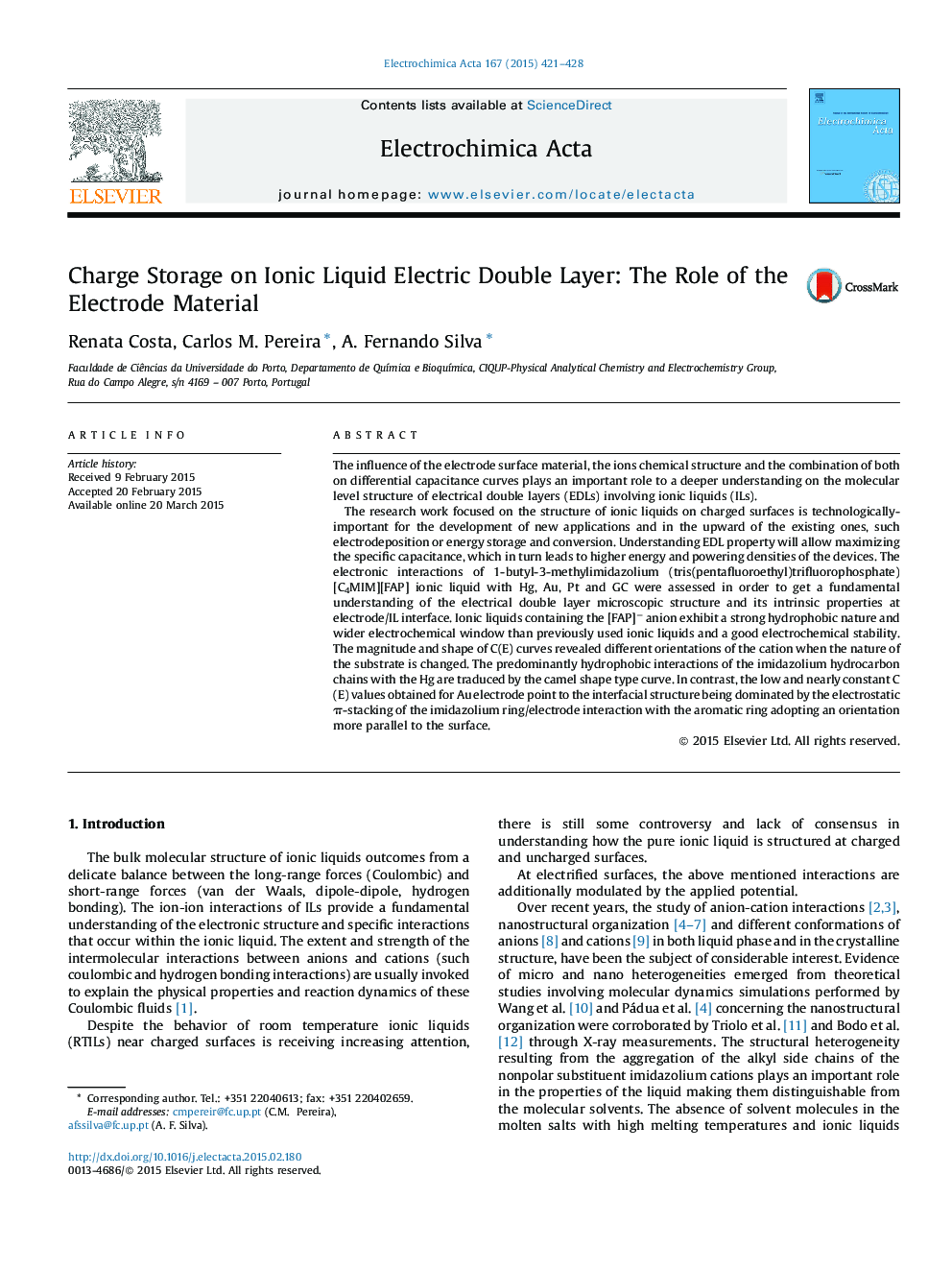| کد مقاله | کد نشریه | سال انتشار | مقاله انگلیسی | نسخه تمام متن |
|---|---|---|---|---|
| 184370 | 459573 | 2015 | 8 صفحه PDF | دانلود رایگان |
• The widest electrochemical window was obtained for the GC substrate with 3.6 V vs. Ag (considering an arbitrary current cut-off of 10 μA cm−2).
• The C(E) curves shape are extremely sensitive to the electrode material.
• Given the nature of the electrode surface, the imidazolium cation will adopt distinct orientations.
• The electric double layer thickness estimated for the Hg surface is consistent with the aliphatic chains being preferably interacting with the surface.
• Any EDL model for ionic liquids that essentially considers the “liquid” side will not be able to reproduce the variety of C(E) curves obtained.
The influence of the electrode surface material, the ions chemical structure and the combination of both on differential capacitance curves plays an important role to a deeper understanding on the molecular level structure of electrical double layers (EDLs) involving ionic liquids (ILs).The research work focused on the structure of ionic liquids on charged surfaces is technologically-important for the development of new applications and in the upward of the existing ones, such electrodeposition or energy storage and conversion. Understanding EDL property will allow maximizing the specific capacitance, which in turn leads to higher energy and powering densities of the devices. The electronic interactions of 1-butyl-3-methylimidazolium (tris(pentafluoroethyl)trifluorophosphate) [C4MIM][FAP] ionic liquid with Hg, Au, Pt and GC were assessed in order to get a fundamental understanding of the electrical double layer microscopic structure and its intrinsic properties at electrode/IL interface. Ionic liquids containing the [FAP]− anion exhibit a strong hydrophobic nature and wider electrochemical window than previously used ionic liquids and a good electrochemical stability. The magnitude and shape of C(E) curves revealed different orientations of the cation when the nature of the substrate is changed. The predominantly hydrophobic interactions of the imidazolium hydrocarbon chains with the Hg are traduced by the camel shape type curve. In contrast, the low and nearly constant C(E) values obtained for Au electrode point to the interfacial structure being dominated by the electrostatic π-stacking of the imidazolium ring/electrode interaction with the aromatic ring adopting an orientation more parallel to the surface.
Figure optionsDownload as PowerPoint slide
Journal: Electrochimica Acta - Volume 167, 10 June 2015, Pages 421–428
